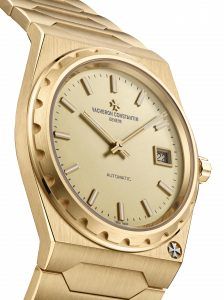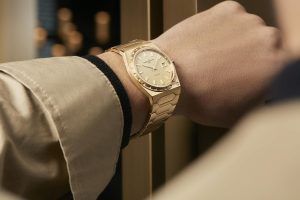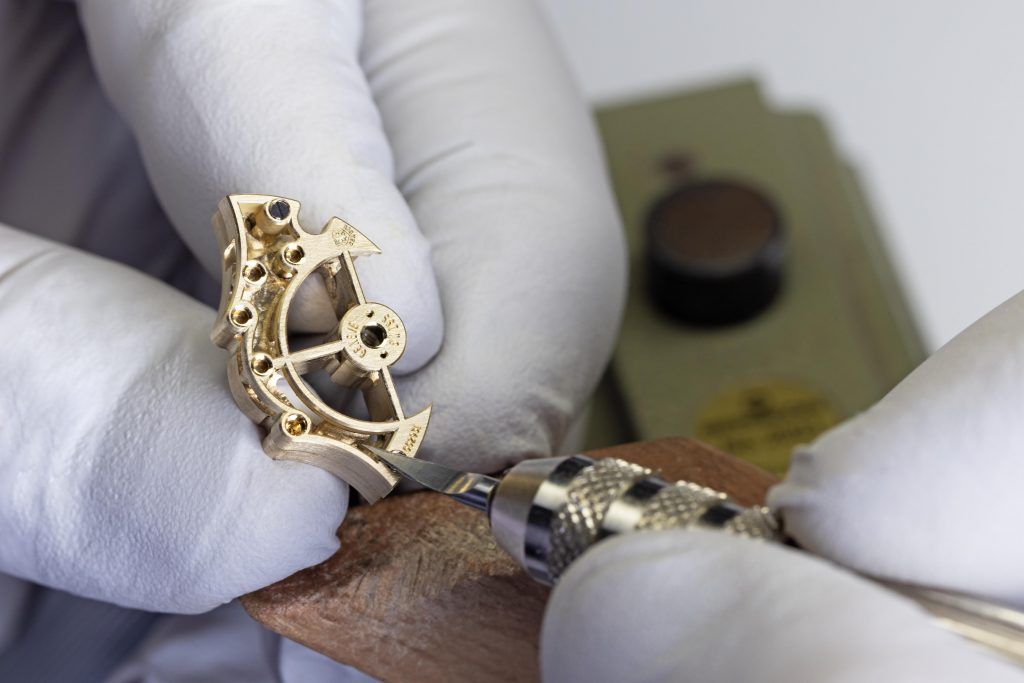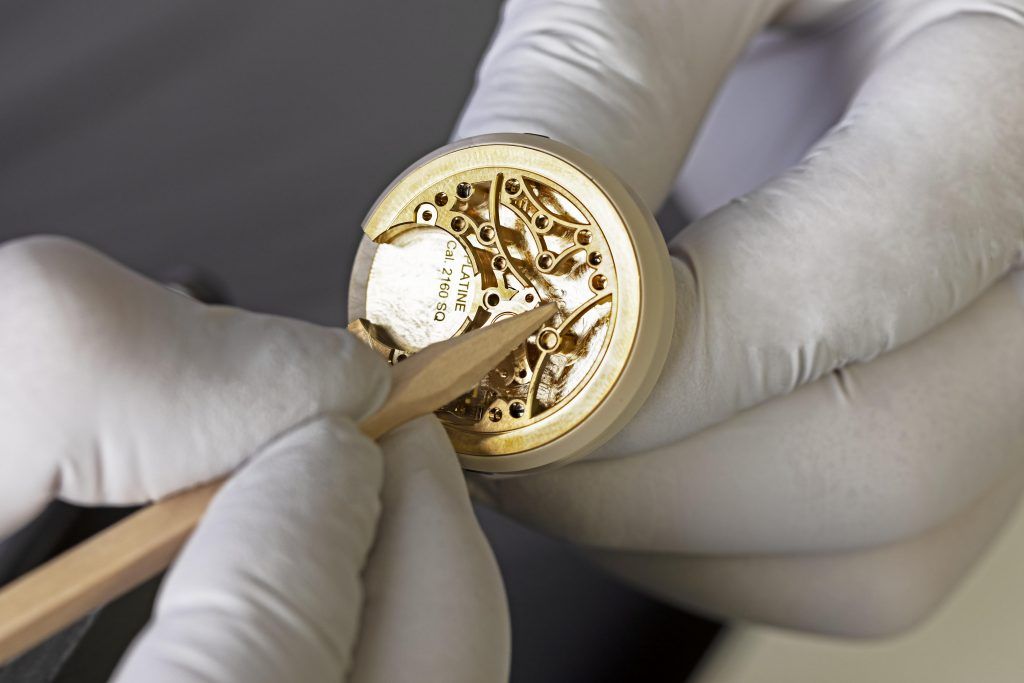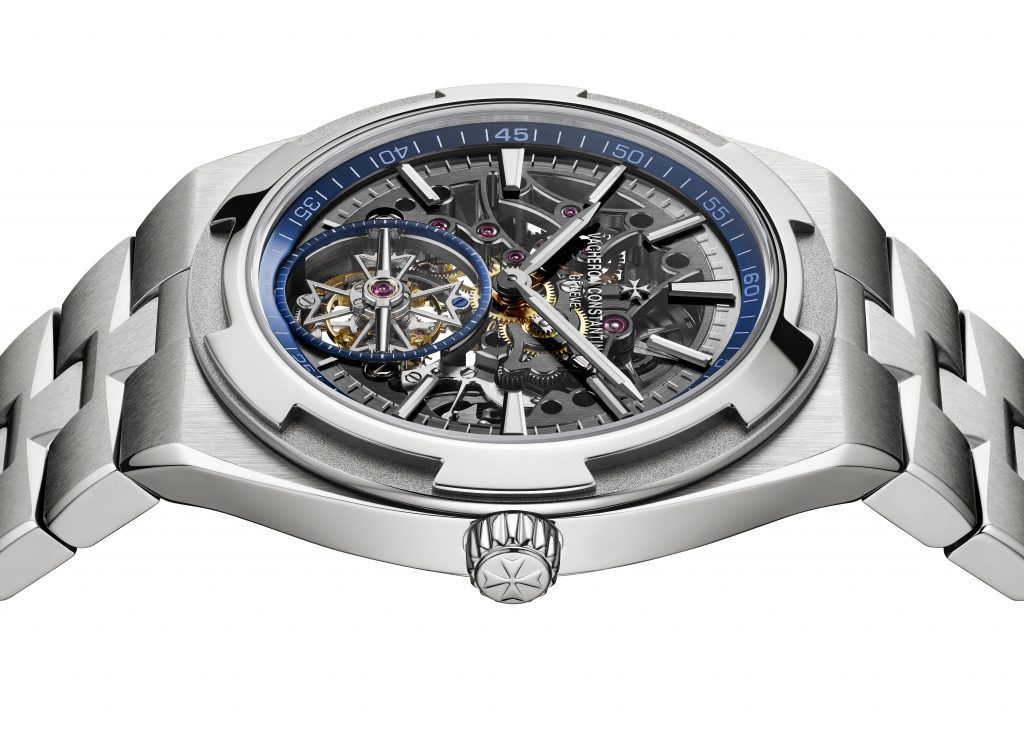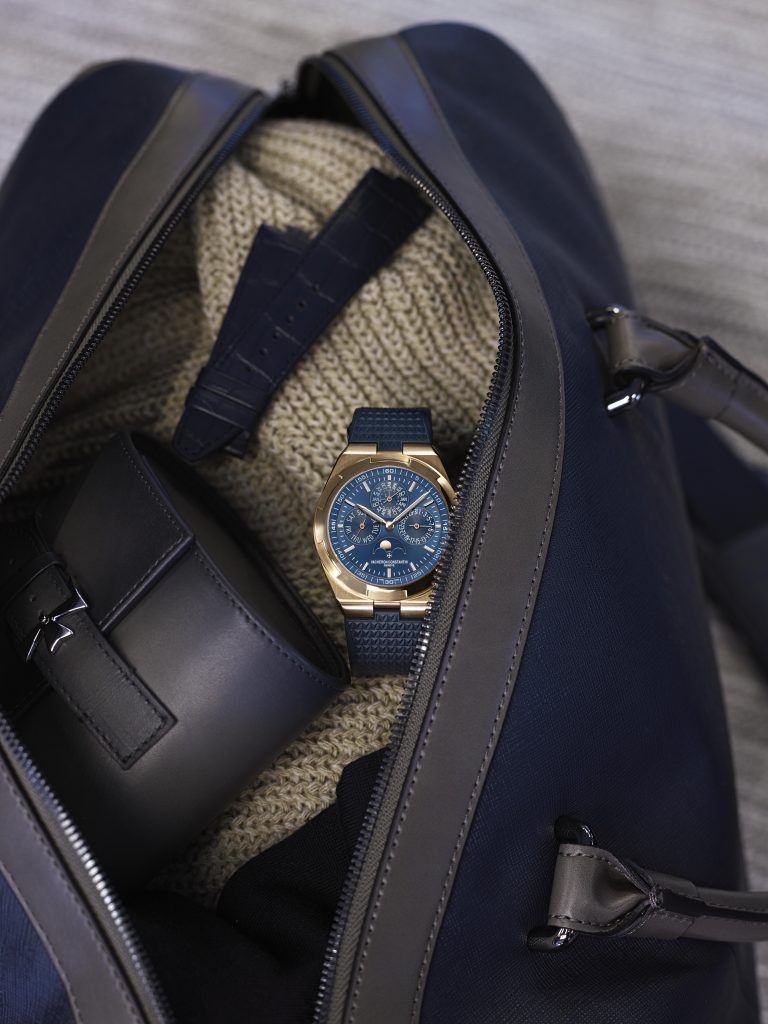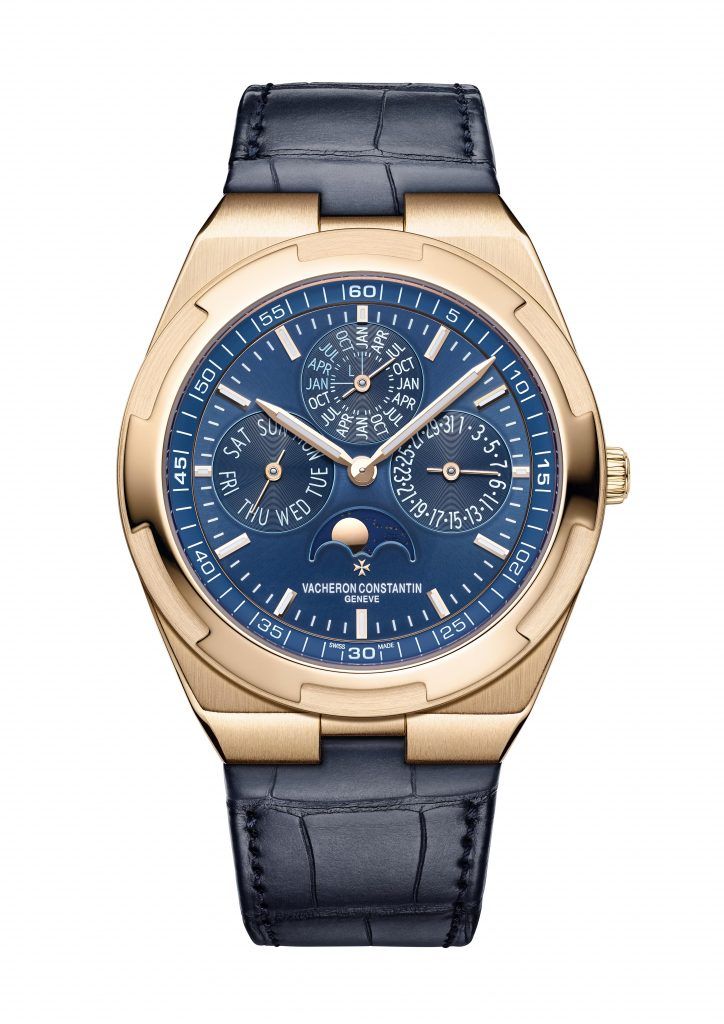When you’re the world’s oldest watchmaker, just about everything you do and every watch you make is taken in the context of a history almost spanning 300 years. In the time, we have evolved from horse-drawn carriages to electric cars, just as many watchmakers have come and fizzled out. Augustman asked Vacheron Constantin Heritage and Style Director Christian Selmoni some hard questions about keeping the Maison relevant, especially when limited production means that every single model is scrutinised to a greater degree and what it means to be the only brand with two integrated bracelet luxury sports watches.
4200H/222J-8935
222
With the launch of the Historiques 222, it makes Vacheron Constantin the only brand with two integrated bracelet luxury sports watches in the market, how do you feel about that?
There are differences in positioning between the Overseas and Historiques 222. The Overseas is our growing series production “sports elegance” collection while the 222 has to be taken from the perspective of history and heritage which allows us to revisit important watches from our past and reinterpret them subtly; analogous examples would be the American 1921 and the Corne de Vache. The 222 is not going to be another “sports elegance” collection in Vacheron Constantin.
If it’s not going to be the second sports model within the Maison, wouldn’t its success then increase pressure to have the model not just a special collection but encourage re-editions in steel and so forth?
If we consider the Historiques collection, we have the option to add other metals for sure. After all, we did it for the American 1921, we launched it in platinum and then white gold. There is a possibility that there will be another version of the 222. The idea behind the yellow gold model is that it’s more exclusive and emphasise the style and flamboyance of the 70s. That said, we are free to launch the model in other materials.
The Overseas Perpetual Calendar has won the GPHG awards in 2020, what is your opinion on such accolades, do you think they influence consumers?
I think if we consider sports watches and tool watches in the 50s, they were professional watches meant for divers, sportsmen and racers. The increasing popularity of sports elegance watches these days see that traditional complications such as perpetual calendar for example or the tourbillon are historically linked to precious metals like gold on leather bracelet and they’ve now be incorporated into sports elegance watches which to me, are a reflection of the lifestyle in the modern 21st century. Living in larger cities with more events, we have to have watches which are more versatile and can be worn in any occasion. This is the reason behind the increasing popularity in complications in sports elegance watches. We are continuing this trend by incorporating a tourbillon skeleton in the line up.
Skeleton
Squelette
6000V/110T-B934 – VMX60TB934
6000V/110R-B935 – VMX60TB935
Skeleton
Squelette
Please settle this watch collector argument: Was the Overseas inspired by the 222 or was it designed separately?
That’s a good question, thanks for asking it! [laughs] Yes, it’s important to note that the first generation of the Overseas was actually influenced by the ref. 222. What were the influences? We have what we call a “flat table” on the top of the case and we set the bezel upon that. That style element has followed from the 222. This is the link but in terms of the other aesthetic elements, both watches diverge.
So now when you’re looking at the divergence of two collections and that they’re both becoming their own thing; for instance, when I see a skeleton flying tourbillon executed in one way in the Overseas and another way in the Cabinotiers model, do you specifically make design considerations respecting modernity and classicism and so work the decorations accordingly?
Absolutely. When we consider skeleton watches, its something we have done since the 20s but since the 60s, our style was to remove as much material from the movement as possible and then to decorate the calibre with hand engraving. What you see on the Overseas is slightly different, we still have the same openwork but we do not make any engraving and instead concentrate on hand bevelling and hand chamfering. In addition, the skeleton movement for the Overseas has been coated in a slate grey which accentuates its modern aesthetic and sleek design.
Do you see Vacheron continuing to keep within the classical design language when it comes to something like a perpetual calendar where you see a lot of modern interpretations that are less classical and more appealing to modern eyes. Do you see the brand actually switching things up a bit or are we going to keep to his design language because of the immense provenance of the brand?
For us, we have to consider that we were founded in 1755, that’s 267 years ago and that we have a unique heritage and legacy in terms of watchmaking traditions. So on one side, its absolutely mandatory to maintain these traditions and the classic style of watchmaking but on the other hand, it’s important in terms of design language that we remain relevant for the era in which we are living and so, that is what we are doing with the Overseas. I think if we consider evolution, when we design a new perpetual calendar, we would concentrate on readability and reliability with as little friction as possible. However, in terms of aesthetics, we still have to remain classic and not indulge in hyper minimalism or over-design. That said, our best example of innovative and contemporary perpetual calendar is the Twin Beat from 2019, mixing tradition with hyper-technicality in the movement.
Does this mean that Vacheron will never explore something like Moser’s Perpetual One? A really clean, really simple to read; is that too modern for the Maison?
I don’t think it’s too modern but it’s a design expression which does not come from our heritage. We could do something like that but our designers are influenced by our pocket watches from the 19th century, it’s in our blood and this is the direction we will carry on.
The new women’s Patrimony perpetual calendar ultra-thin are 36.5mm, very similar proportions to men’s vintage dress watches. In your opinion, do you feel watches are about to become genderless?
I think the frontier between men’s and women’s watches is becoming more blurred. Your example is perfect – a 36.5mm Perpetual Calendar is exactly what we were doing in the 80s. As you know, we weren’t the only ones, our competitors were also following and so I think, today, there’s an important market for a 36.5mm high complication watch with no diamonds and no mother of pearl dial so then it would be an ideal watch for both men and ladies. That said, our production is very limited and while we would like to serve the entire market, we had to concentrate on the feminine segment. But I agree, I think this is one of the good examples of genderless watchmaking. Personally, I would love to wear the rose gold Patrimony with radiant dial and diamonds for the minute track, I think it’s super elegant and super sophisticated. My only complaint is that the strap is too short.
Connoisseurs today use high powered loupes. With things like skeleton open work exposing more of the finishing, is it a good thing or bad thing that these tools are in our hands now?
I’m personally very confident in the superlative quality of our hand finishing. We are one of the few brands who are still really doing hand finishing on the movements and so I’m quite comfortable with this development.
But… when people start to complain about hand finishing not being “perfect”, do you feel that given that it is done by hand, there shouldn’t be that expectation of perfection?
I honestly don’t think perfection exists. I think it’s normal and should be accepted that all movements do not all look the same. It can happen that out of over 260 components, a few of them could be less perfectly finished than others but this is a signature of craftsmanship. I think perfect objects are very boring and feel very industrial.
Social media is very popular in the watch collecting community and they love positing these “mistakes”, what’s your opinion on this development?
I started hanging around watch forums in 2001. It was new at the time and I saw many discussing about the depth of guillochage and precision of the guillochage and I thought to myself, “these people are crazy”. But what I learned from these people is that you can always improve on your level of craftsmanship. I thin it’s a good thing that it’s pushing us to go even further.
In Singapore, there’s a fetish for movements. It’s almost like that’s the most important consideration. Whereas I personally find that if the design doesn’t get you, you don’t fall in love at first sight, there’s really no point talking about the movement. What is your perspective on that?
I would say that for me, we consider the watch as an objet. The watch is a handcrafted object made of case, dial, hands, movement and strap and buckle, so I think semantically we have to consider the totality of the timepiece and appreciate its various dimensions with a differing degree of interest. It should be taken as a whole but I understand that some people think differently and that’s fine. For me, I always consider there’s an intimate connection between design and technicality.
